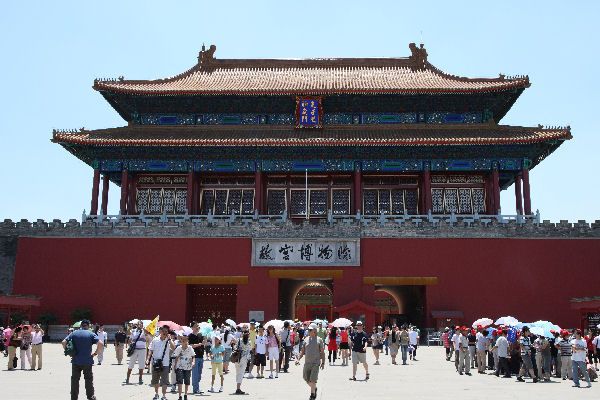
|
Touring Beijing Municipality Forbidden City Lying at the center of Beijing, the Forbidden City, called Gu Gong in Chinese, was the imperial palace during the Ming and Qing dynasties. Now known as the Palace Museum, it is to the north of Tiananmen Square. Rectangular in shape, it is the world's largest palace complex and covers 74 hectares. Surrounded by a six meter deep moat and a ten meter high wall are 9,999 rooms. The wall has a gate on each side. Opposite the Tiananmen Gate, to the north is the Gate of Divine Might (Shenwumen), which faces Jingshan Park. The distance between these two gates is 960 meters, while the distance between the gates in the east and west walls is 750 meters. There are unique and delicately structured towers on each of the four corners of the curtain wall. These afford views over both the palace and the city outside. Hi Res Pic (170K) Return to Touring Beijing |
| Forbidden City | |
|
The Forbidden City is divided into two parts. The southern section, or the
Outer Court was where the emperor exercised his supreme power over the nation.
The northern section, or the Inner Court was where he lived with his royal
family. Until 1924 when the last emperor of China was driven from the Inner
Court, fourteen emperors of the Ming dynasty and ten emperors of the Qing
dynasty had reigned here.
|
|